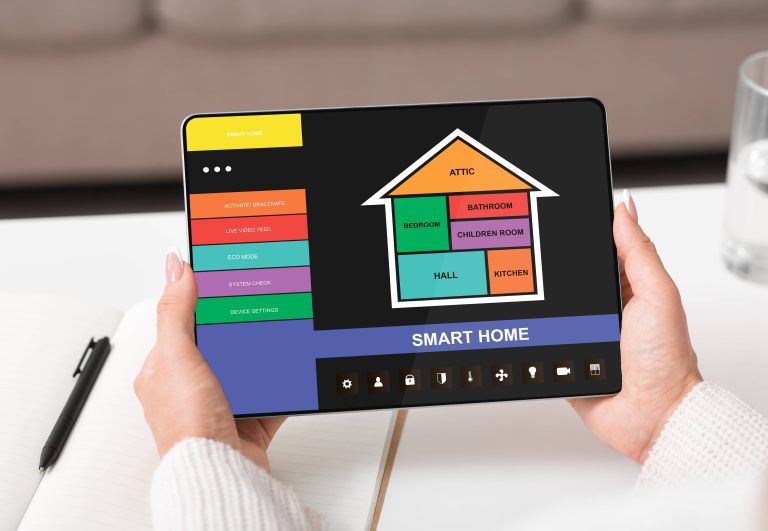![]()
In today’s digital era, the quest for a sustainable lifestyle is more attainable than ever. Smart home technology has revolutionized the way we interact with our living spaces, offering a multitude of tools to enhance energy efficiency. Among these innovations, smart plugs stand out as a simple yet powerful device for monitoring and managing energy consumption. In this blog post, we will delve into the benefits of tracking energy usage with smart plugs, how they function, and tips on optimizing your energy consumption for a more sustainable lifestyle.
What Are Smart Plugs?
Smart plugs are compact devices that fit between your standard electrical outlet and the appliance you wish to control. By connecting to your Wi-Fi network, they allow you to monitor and manage the energy usage of a variety of household devices via a smartphone app or home automation system. With features like remote control, scheduling, and real-time energy monitoring, smart plugs are invaluable tools for enhancing energy efficiency.
The Benefits of Tracking Energy Usage
1. Enhanced Energy Awareness
Understanding how much energy each device in your home consumes is the first step towards efficient usage. Smart plugs provide detailed insights into the energy patterns and costs associated with each appliance. By having precise data at your fingertips, you can make informed decisions about your energy consumption.
2. Identifying Energy Hogs
Many households have appliances that silently drain a significant amount of electricity, even when not in active use. Identifying these energy hogs can be challenging without precise tracking. Smart plugs help pinpoint where excessive energy consumption occurs, allowing you to address inefficiencies directly.
3. Cost Savings
Wasted energy equates to wasted money. By utilizing smart plugs to monitor and reduce unnecessary energy usage, households can achieve substantial cost savings on their monthly utility bills. For example, automatic scheduling can ensure that devices like heaters or air conditioning units are only running when necessary.
4. Environmental Impact
Reducing energy consumption isn’t just good for your wallet; it’s beneficial for the planet. Lowering your energy usage decreases your household’s carbon footprint, contributing to global sustainability efforts. This is especially pertinent given the increasing environmental challenges posed by climate change.
5. Convenience and Control
Smart plugs offer unparalleled convenience. From turning off lights you forgot to switch off before leaving home to scheduling coffee makers for an automatic brew every morning, smart plugs integrate seamlessly into daily life, providing both convenience and control.
How Do Smart Plugs Work?
Smart plugs function by acting as intermediary controllers that connect your devices to your home Wi-Fi network. Here’s a breakdown of their operation:
1. Plug the Smart Plug into an Electrical Outlet: Position the smart plug into any standard wall outlet.
2. Connect the Appliance: Plug the appliance you wish to monitor into the smart plug.
3. Set Up via Mobile App: Use the compatible smartphone application to configure the smart plug. This includes connecting it to your Wi-Fi network and naming your device for easy identification.
4. Monitor and Control: Through the app, you can monitor real-time energy usage, set schedules, receive alerts, and even turn the appliance on or off remotely.
Optimizing Energy Consumption with Smart Plugs
To maximize the benefits of smart plugs, consider incorporating the following strategies:
1. Set Schedules for Timely Usage
Create schedules for appliances to run only when needed. For instance, water heaters or other high-energy devices can be programmed to operate during off-peak hours to save on energy costs.
2. Utilize ‘Away’ Modes
Increase energy efficiency by enabling ‘away’ modes on smart plugs. This feature ensures that non-essential devices (such as entertainment systems or decorative lighting) are turned off when the home is unoccupied.
3. Monitor and React to Energy Reports
Regularly review energy usage reports provided by the smart plug’s app. Look for unusual spikes or patterns that may indicate inefficient energy use. Take corrective actions, such as repairing or replacing faulty appliances.
4. Integrate with Home Automation Systems
For those deeply invested in smart home ecosystems, integrating smart plugs with broader automation systems (like Amazon Alexa, Google Home, or Apple HomeKit) enhances their utility. You can create sophisticated routines that coordinate multiple devices for optimal energy efficiency.
5. Educate Household Members
Encourage all members of your household to engage with energy-saving practices. Educate them on using the smart plug app and involve them in tracking energy consumption targets and achievements.
Popular Smart Plug Options
To get you started, here are a few reliable and popular smart plugs available in the market:
1. TP-Link Kasa Smart Plug: Known for its ease of use, this plug supports voice control, scheduling, and real-time monitoring via the Kasa app.
2. Wemo Insight Smart Plug: It offers energy monitoring, remote access, and integrates well with both Amazon Alexa and Google Assistant.
3. Philips Hue Smart Plug: Designed specifically to work with the Philips Hue lighting system, it also supports integration with other smart home platforms.
Conclusion
Harnessing the power of smart plugs offers a convenient, effective way to track and optimize energy usage within your home. By gaining insight into real-time consumption data, setting automated schedules, and addressing energy inefficiencies, smart plugs empower homeowners to achieve a sustainable lifestyle. Beyond just cost savings, the reduction in energy consumption contributes positively to the environment, helping pave the way for a greener future. Implement smart plugs in your home today, and enjoy the myriad of benefits that come with a more connected and energy-efficient lifestyle.







